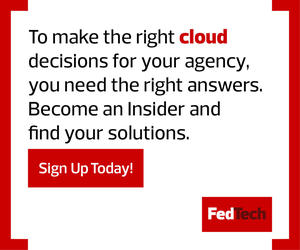How Cloud Migration Fits into the Army’s Plans
The Army says in its first RFI that it needs an enterprise-scale contractual vehicle or agreement to modernize and migrate its applications and data into commercial cloud environments. The Army’s ability to master cloud computing “is a critical enabler in the pursuit to operationalizing data,” the RFI says.
The work will include performing deep application assessments and modernizing and migrating applications into DOD-authorized commercial cloud environments at impact levels 2, 4, 5 and 6 commercial cloud environments. Those assessments will enable the Army to make “an intelligent business decision as to whether and how to refactor, replatform, recode or replace each application to best meet mission requirements,” according to the RFI. Once the government decides on a modernization strategy for a particular application, the contractor would pursue that path in migrating it to a commercial cloud environment.
For planning purposes, the contractor shall assume the Army will modernize and migrate to commercial cloud 50 to150 applications each year. The Army would have the option to operate and continually enhance its apps once they have migrated into the cloud.
The majority of the Army’s applications will migrate into cARMY, which “offers authorized and operational common shared services” with Amazon Web Services and Microsoft Azure at DOD Information impact levels 2, 4 and 5, with contracts and plans in place to develop common shared services at IL 6.
RELATED: How do you determine what belongs in the cloud and what does not?
Army Hunts for Cloud-Based Data Management Platform and Services
In the second RFI, the Army explores its need for cloud-based data management capabilities and notes that right now, it is lacking in that area.
It notes that the service branch currently “lacks an enterprise, cloud-native platform with integrated data standards, harmonized data governance and common services across the complete Data Lifecycle to support Army Readiness, tactical and operational needs, and to enable advanced analytics, Artificial Intelligence/Machine Learning (AI/ML) and data-driven decision-making across all mission areas.”
To get the capabilities needed to win on the modern, data-driven battlefield, the RFI says, the Army “must operationalize its data and invest in resilient information ecosystems designed to provide and protect critical information for the Joint Forces.”
Currently, the Army’s systems and services “apply different data governance practices and services to source, store, catalogue and condition data specific to their mission and domain,” the RFI says. That often makes it difficult to find, alter and use data seamlessly “across all data domains, such as cyber, logistics, weapon systems and intelligence.”
“The pace of the evolving threat landscape mandates a change in the culture and operational construct for how the Army manages data across all mission areas given their natural convergence,” the RFI says.
As a result, the Army needs to “fundamentally transform its approach to data governance and data management,” according to the RFI. The service is looking to deploy a “standardized, secure, trusted, agile and resilient set of data management services and a data platform to serve all common data governance needs across all data domains.”











